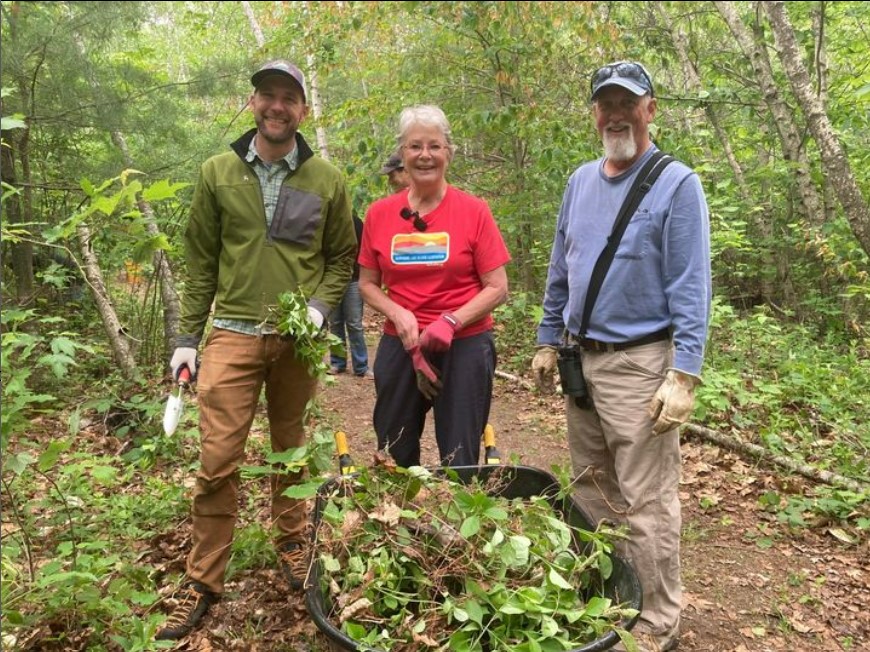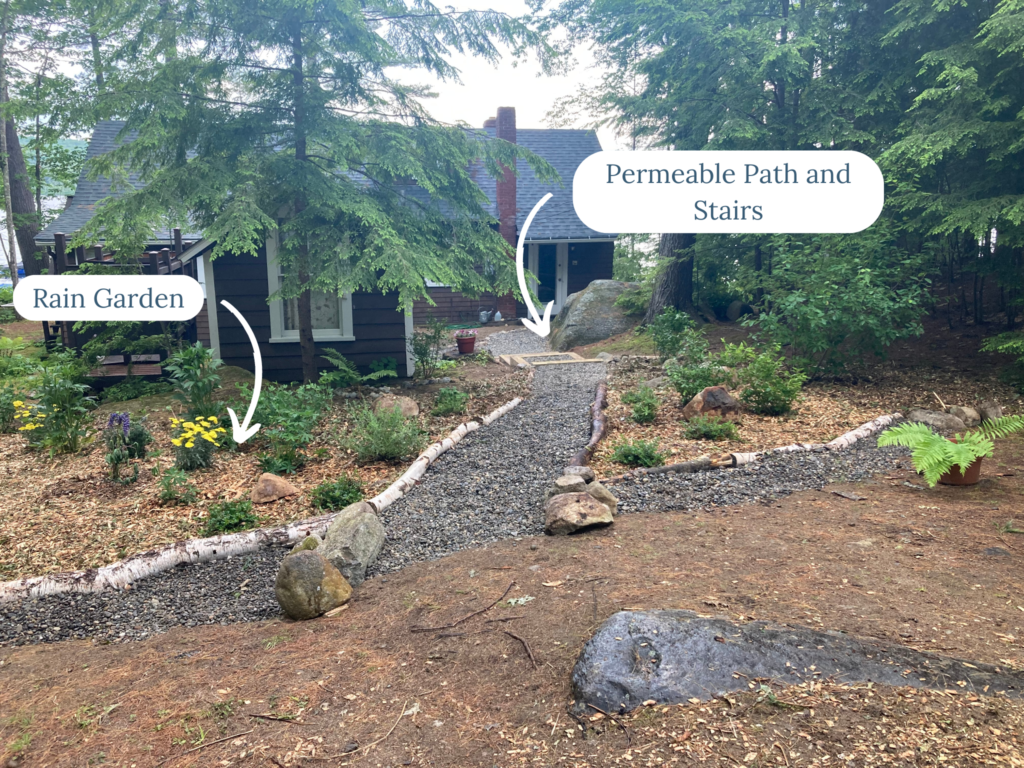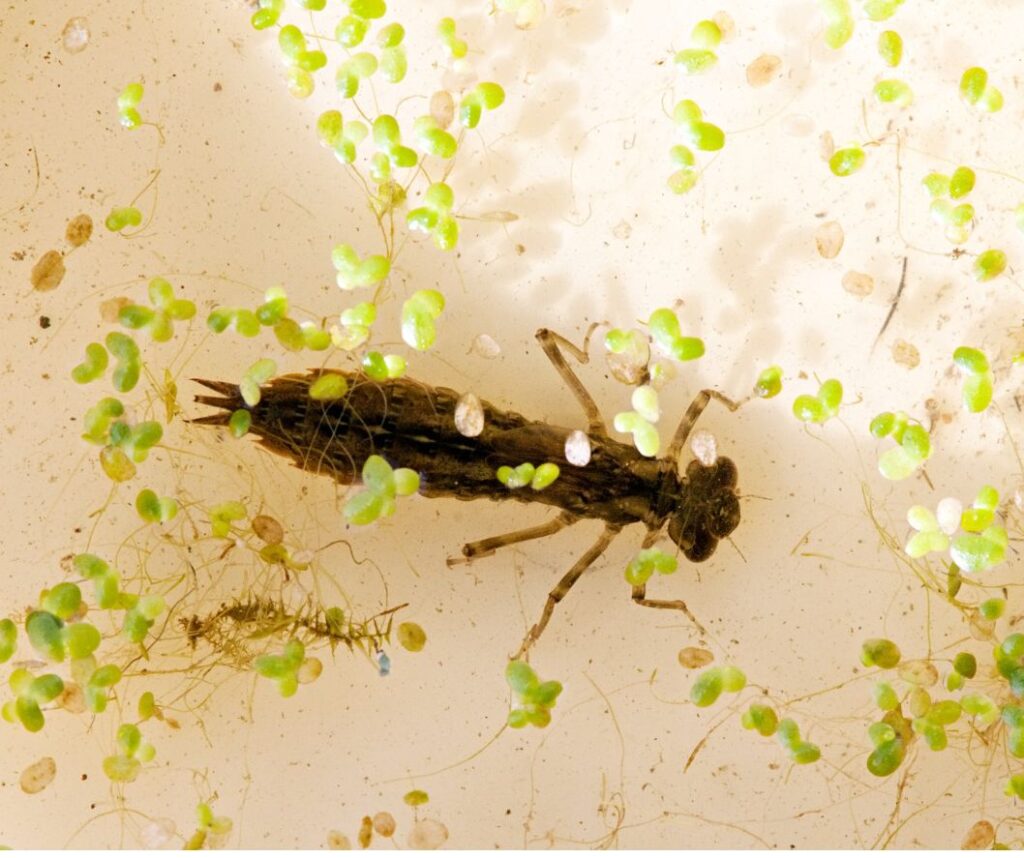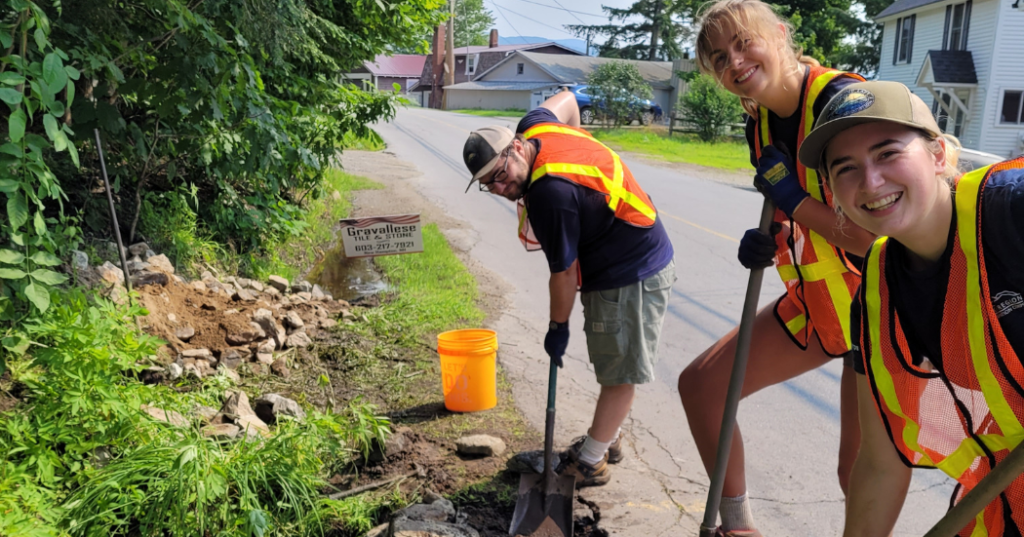One thing that has really impressed me during my service with the Newfound Lake Region Association is how friendly the people and volunteers here are. It is amazing to see this tight-knit community coming together to protect what is important to them. This community’s dedication to NLRA’s mission was made clear during the volunteer meet and greet and work day at Grey Rocks. Over coffee, NLRA staff and volunteers gathered to discuss the important conservation work happening in the watershed and the many upcoming volunteer opportunities. It was a wonderful experience getting to know more about the people in the area and what Newfound Lake and its watershed means to them. After the meeting, we spent some time on the Floodplain Loop Trail at Grey Rocks removing a bunch of oriental bittersweet seedlings. Oriental bittersweet, Celastrus orbiculatus, is a highly invasive plant. These vines will literally take over the landscape by wrapping around entire trees and plants and suffocating them. Like most invasive plant species, oriental bittersweet outcompetes our native plants, which limits resources native plants can use, and results in loss of biodiversity. The NLRA has been keeping an eye on areas that are known to have oriental bittersweet at Grey Rocks and removing it with the help of volunteers. You can find upcoming volunteer days at Grey Rocks at NewfoundLake.org/events.

A very important part of protecting the water quality of Newfound Lake and watershed is stormwater management. Using various management techniques, watershed residents can prevent runoff carrying harmful pollutants from entering nearby waterways.
NLRA watershed stewards had the opportunity to implement stormwater management techniques at a shorefront home on Newfound Lake. The project consisted of 3 main parts: permeable stairs and walkways, dry wells, and a garden. For more information about these and other projects you can implement to prevent stormwater runoff on your propertyk visit our online stormwater resource library: https://newfoundlake.org/stormwater-resources/. much of the property surrounding the house was bare soil, which causes runoff during storms. The new garden will prevent this. Around the garden we dug infiltration trenches. Rather than moving the topsoil and causing erosion during storms, stormwater will drain into these trenches and dissipate through the ground over time. Based on the geographic features of the property, when a storm occurred most of the runoff was funneled into a single point. Where the landscape bottlenecked we constructed infiltration steps and a permeable walkway to slow down runoff and prevent further erosion. These permeable surfaces allow water to soak up in the ground and stop large sheets of moving water that cause erosion and runoff. Lastly we installed two dry wells where the home’s gutters and downspouts direct concentrated stormwater from the roof. The dry wells will allow stormwater to filter through the ground.

NLRA offers educational events and programs for the public to help connect people to the mission of protecting the watershed. Watershed Stewards design and lead public programs that fit within NLRA’s mission. On July 20, I will be running an event that looks at the importance and diversity of aquatic invertebrates in the Cockermouth River. One such importance is that they readily act as bioindicators of water quality. Some aquatic invertebrates are indicators of good water quality, while others indicate poor water quality. By using collected samples from other waterways in the area, I will show participants how to identify different aquatic invertebrates before we wade into the Cockermouth to collect and identify specimens for clues on the river’s water quality. Find upcoming programs like this one at NewfoundLake.org/events.


